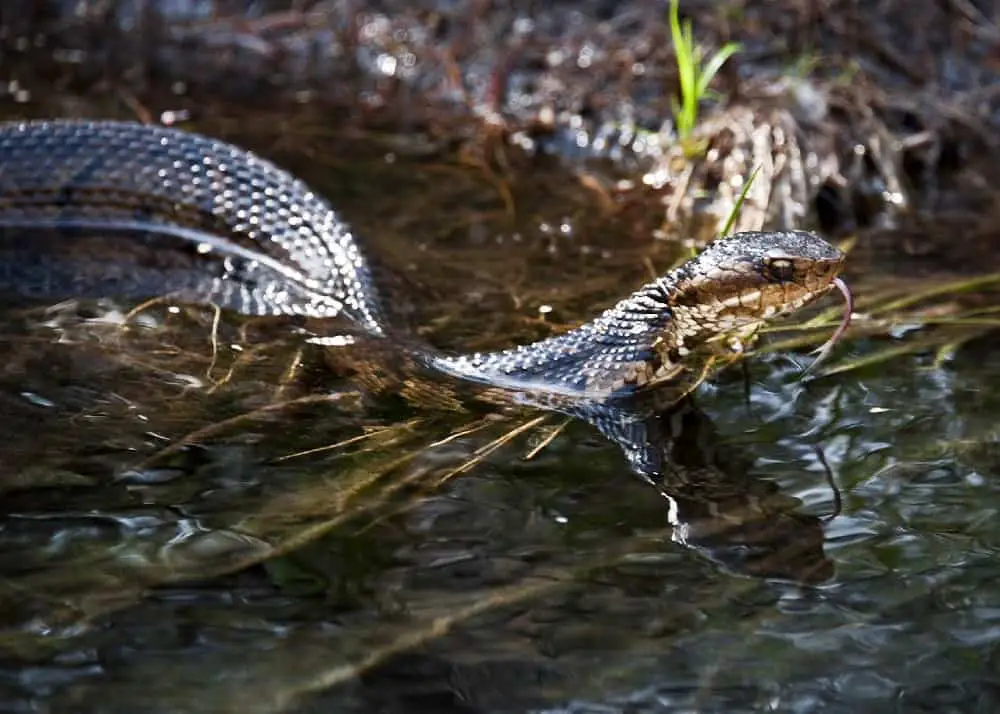
Water snakes are found in and around water bodies or wetlands in the United States. But just how do you identify them, and how many types of water snakes are there?
Water snakes are nonvenomous harmless native snakes that live in wetlands. There are ten species of water snakes listed in the United States. They are Brown water snake, Concho, Diamondback, Florida Green, Harter’s, Mississippi Green, Plain-bellied, Southern, Northern, and Salt Marsh water snakes.
Water snakes are found abundantly in the US, living near rivers, marshlands, and lakes. Here we discuss everything you need to know about water snakes and how to identify them when encountering one.
Table of Contents
-
10 Types of Water Snakes
- Brown Water Snake – Nerodia taxispilota
- Saltmarsh Water Snake – Nerodia clarkii
- Florida Green Water Snake – Nerodia floridana
- Southern Water Snake – Nerodia fasciata
- Concho water snake – Nerodia paucimaculata
- Diamondback water snake – Nerodia rhombifer
- Harter’s Water Snake / Brazos River Snake – Nerodia harteri
- Mississippi Green water snake – Nerodia cyclopion
- Plain-bellied water snake – Nerodia erythrogaster
- Northern water snake – Nerodia sipedon
- Conclusion
10 Types of Water Snakes
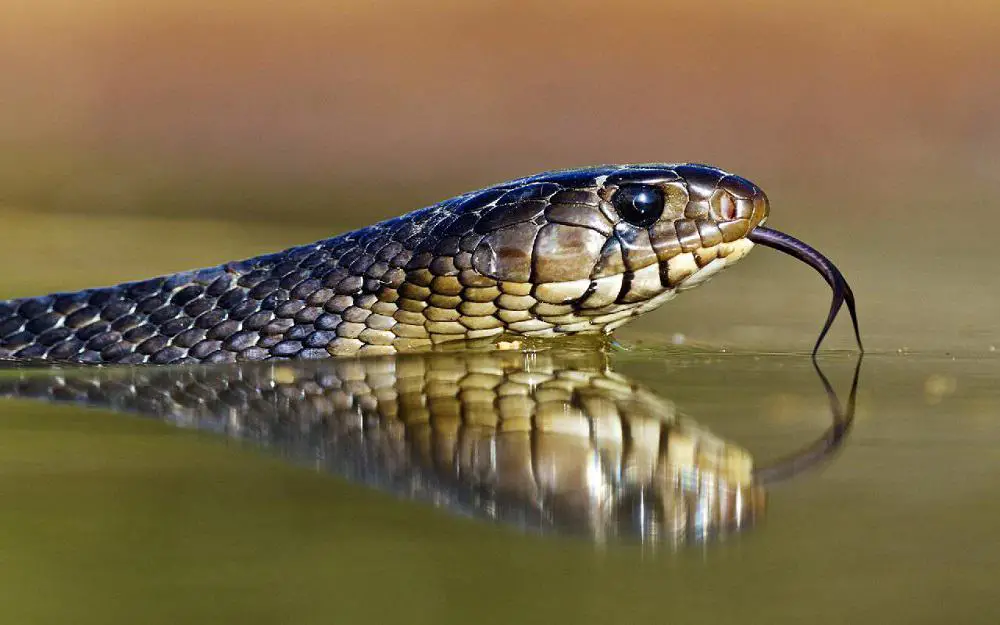
The most frequently encountered and most widespread snakes in the United States are Garter snakes and Water snakes.
Water snakes are of the subfamily Natricinae and are closely related to Garter snakes. Here listed are the ten species of water snakes.
- Brown water snake – Nerodia taxispilota
- Concho water snake – Nerodia paucimaculata
- Diamondback water snake – Nerodia rhombifer
- Florida Green water snake – Nerodia floridana
- Harter’s water snake / Brazos River snake – Nerodia harteri
- Mississippi Green water snake – Nerodia cyclopion
- Plain-bellied water snake – Nerodia erythrogaster (with four subspecies)
- Southern water snake – Nerodia fasciata (with three subspecies)
- Northern water snake – Nerodia sipedon (with four subspecies)
- Salt Marsh water snake – Nerodia clarkii (with three subspecies)
Water Snakes
Water snakes are non-venomous snakes found in the US that typically live around water. Sometimes water snakes are confused with cottonmouths/water moccasin snakes. Water moccasins are dangerous with a venomous bite. People unable to tell the two species apart often kill harmless water snakes, thinking they are water moccasins snakes.
Water moccasins (Viperidae) and water snakes (Colubridae) are from two different families but look the same. The similarity between the two snakes might be an evolutionary adaptation of the water snakes to avoid predators.
To identify the two species apart, look at their necks and heads. Water moccasins have heavy stocky heads and thick bodies with a distinctive neck, a rounder narrow head with a long slender body, and a less prominent neck. Water moccasins have heat-sensitive pits on their faces, while water snakes don’t.
Getting close enough to identify that feature might be dangerous, so it is better to stay clear of snakes no matter what the type.
Characteristics
The colors and markings of water snakes vary from species to species. They are primarily gray, brown, reddish, olive green with dark blotches or bands on their backs. When water snakes are wet and in water, they can appear solid black or brown.
The scales on water snakes are keeled along the back, and their pupils are round.
Females grow faster, are longer, and weigh more than males. Typically, water snakes grow long; the northern water snake measures 5 feet long, while other species measure 3 feet.
Females breed annually and can give birth to 20 live snakes. Water snakes are ovoviviparous, which means eggs incubate inside the mother’s body.
Habitat
Water snakes are found near wetlands, lakes, rivers, and marshlands in Florida, North and South Carolina, Georgia, Arkansas, Mississippi, and Alabama. A few water snake species are found in California, Iowa, and Illinois. They spend a lot of time swimming or basking in shallows and swimming, but will also go onto land and climb trees. However, they will never stray far from the water source.
Behavior and Diet
Even though water snakes are harmless, they can be aggressive. They will become aggressive when approached, even if they are not being handled.
They will often stay on tree branches above water and, when they are disturbed, will drop into the water. Water snakes are solitary animals and primary diurnal but can hunt at night. They hibernate during winter and become social before and after hibernation.
Water snakes secrete a musky substance from glands near the tail, which they expel if they are threatened and will also defecate or vomit when threatened.
Water snakes feed in or near water; on amphibians like toads, salamanders, frogs, and fish, their prey is swallowed alive.
Conservation Status
According to the International Union for Conservation of Nature (IUCN), most types of water snakes are not endangered except for two species on the IUCN’s Red List of Threatened. The Concho water snake – Nerodia paucimaculata and Brazos River water snake – Nerodia harteri are listed as threatened.
Brown Water Snake – Nerodia taxispilota
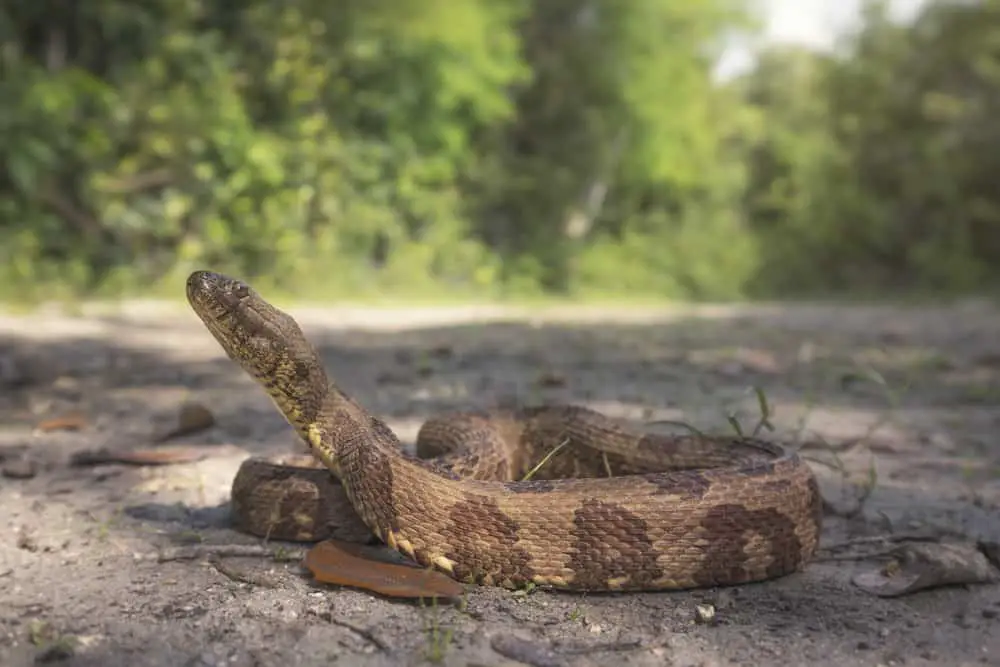
Brown water snakes are light tan with squarish dark brown blotches down the back and measure about 30-60 long. Their heads are large and distinct from the neck. They are found throughout mainland Florida but not in the Florida Keys.
Brown Water snakes are non-venomous and not dangerous to pets or humans but will bite to defend themselves when handled.
They feed on freshwater fish like catfish. They are not constrictors and hunt by grabbing prey with their jaws and swallowing them whole. During spring and fall, Brown water snakes are active during the day but become active at night during the hot summer.
Saltmarsh Water Snake – Nerodia clarkii
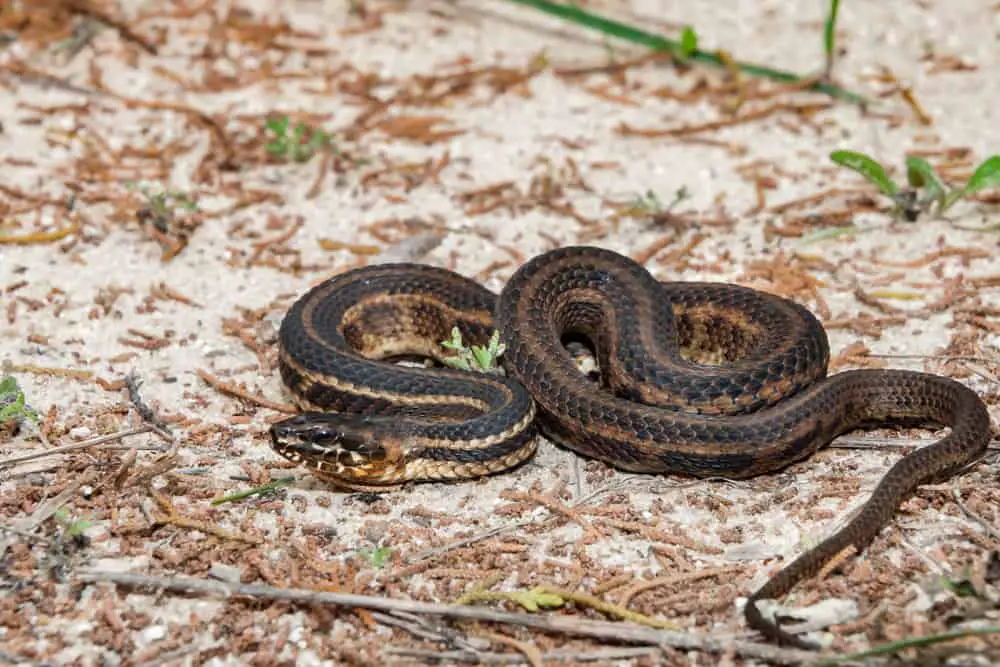
The Saltmarsh water snake is brown, tan, rusty orange, gray, grayish olive, with dark stripes or bands down the entire length of its body. Some Saltmarsh water snakes can be without stripes entirely as well as solid black. They measure 15-30 inches long.
Saltmarsh water snakes are non-venomous to humans and pets. They are found along the coast in brackish and saltwater habitats. Saltmarsh water snakes are active at night, feed on small fish caught in shallow water, and occasionally feed on fiddler crabs and tiny frogs.
They occur along Volusia, Martin, Broward, Escambia, Santa Rosa counties, and the Florida Keys.
Florida Green Water Snake – Nerodia floridana
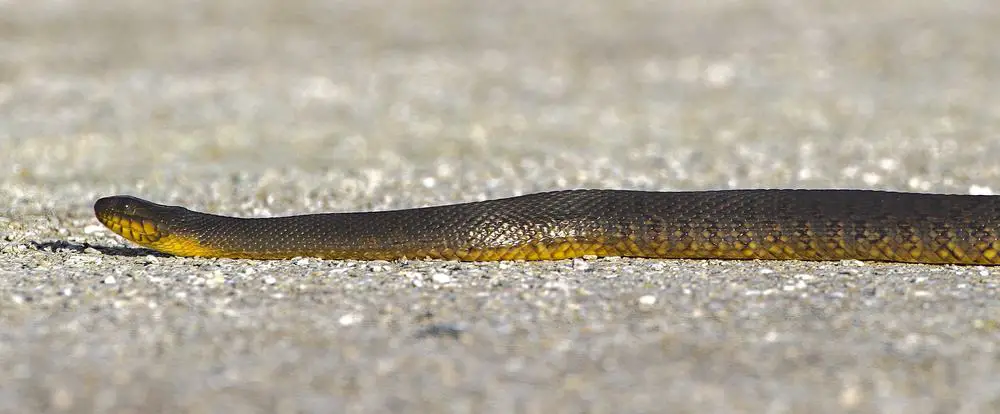
The Florida Green water snake is a sturdy-bodied, brown, orange, or green, dark speckled snake with a large head with small scales between the upper lip and eye scales. They are non-venomous to humans and pets. Florida Green water snakes measure is about 30-55 inches long. They feed primarily on freshwater fish and amphibians, which they swallow whole.
Primarily found in mainland Florida but not in the Florida Keys.
Southern Water Snake – Nerodia fasciata
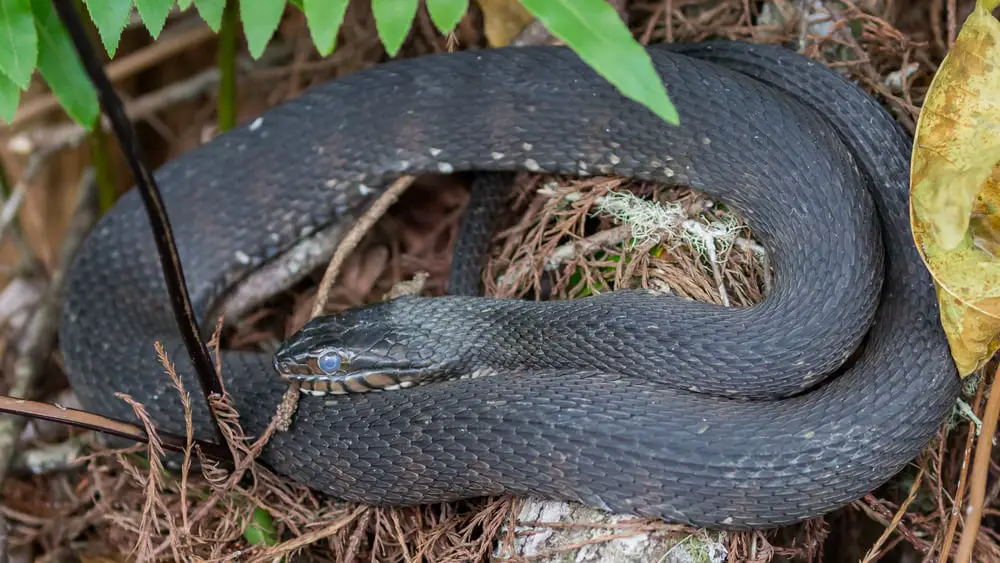
This sturdy-bodied non-venomous Southern water snake has red, brown, and broad black crossbands down the back of its body with a dark stripe from the eye to the jaw.
They measure 22-42 inches long. The lighter narrower bands are gray, reddish, or tan. A black stripe breaks the light bands down the middle of its back.
As the snake gets older, the crossbands can vanish, and they can become completely black.
The Southern water snake is active at night and feeds mainly on freshwater fish and frogs. They are not constrictors; they grab their prey and swallow them alive.
Concho water snake – Nerodia paucimaculata
The Concho water snake has large dark reddish-brown bands on its body and measure 3 feet long. They feed on red shiners and bullhead minnows, flathead and channel catfish, mosquito fish, sunfish, and gizzard shad.
Found in Texas in the Concho and Colorado River basins, they live in free-flowing streams using rocks and crevices as cover.
In winter, Concho water snakes hibernate in rock ledges, crayfish caves, and natural cover.
They hunt fish by keeping very still near fish concentrations which they grab while passing and searching under and around rocks for prey. Kingsnakes, racers, coachwhips, herons, raccoons, owls and hawks, are natural predators of the Concho water snake.
Diamondback water snake – Nerodia rhombifer
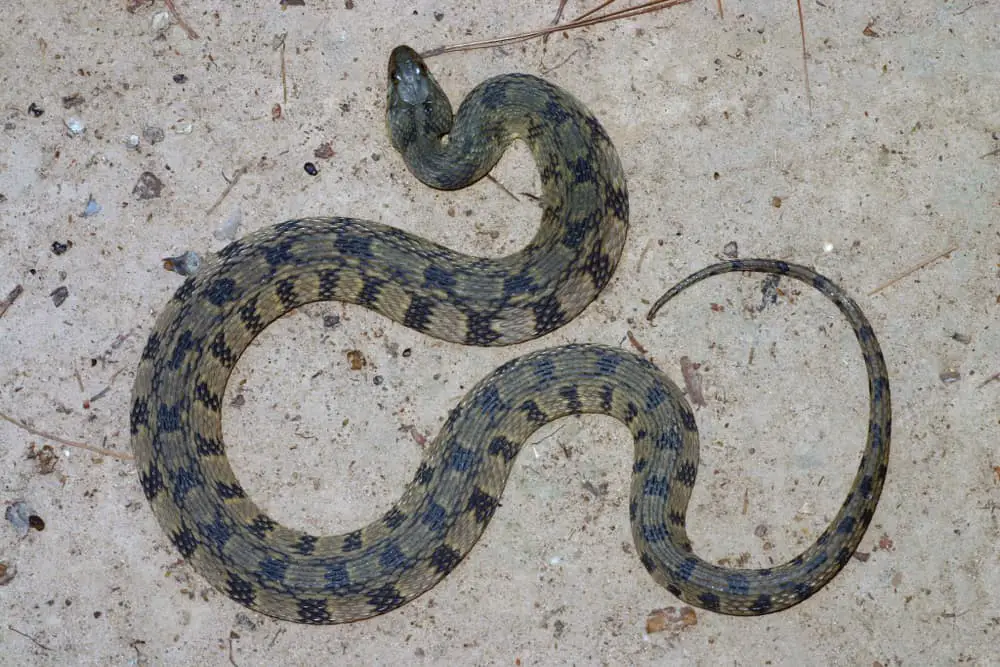
Diamond-backed water snakes have sturdy bodies with light gray-brown chain-like patterns down its body entire body. The scales on its back are keeled.
Its distinctive pattern of dark blotches down the middle of its back connects alternating rows of dark blotches on the sides by short diagonal stripes with a yellow belly. The Diamond-backed water snake has 25-31 scale rows at midbody and a round pupil.
The non-venomous Diamond-backed water snake found in Santa Rosa is not dangerous to pets and humans but will defend itself by biting if threatened.
This no constrictor snake feeds mainly on frogs and freshwater fish. Primarily active during the night in summer but will become active during the day in fall and spring.
Harter’s Water Snake / Brazos River Snake – Nerodia harteri
The Harter’s water snake, or Brazos River snake, is named after the great Brazos River. This harmless non-venomous snake is native to Texas rivers. It feeds on fish, salamanders, frogs, and crayfish.
This water snake has brown and gray or green and brown colors. Brazos water snakes have four rows of dark dorsal spots along the length of their body that look like a checkerboard. The belly is orange or pink, and its neck is a cream color or yellow color.
It likes living in fast-flowing rocky waters. The Brazos water snake hides under rocks in the water or bushes and trees on the shoreline.
The Brazos water snake is active during the day and needs cover like rocks for security. The female Brazos water snake will give birth to as many as 23 live young in September and October. This snake is considered threatened in the Brazos River basin.
Mississippi Green water snake – Nerodia cyclopion
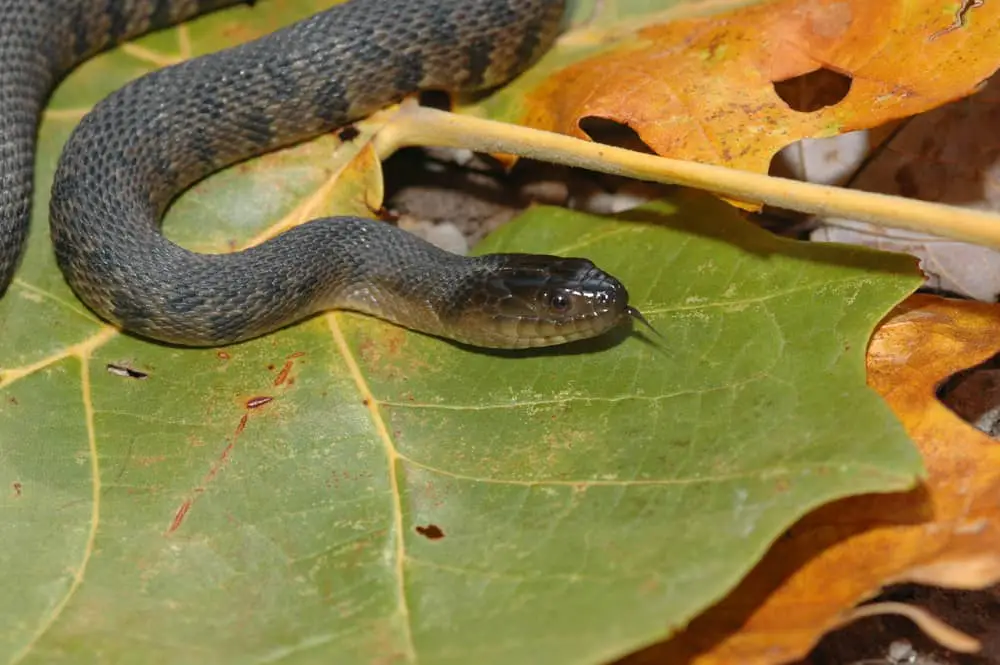
The Mississippi Green water snake is a heavy-bodied, dark-colored, medium-sized snake measuring 30 to 24 inches with many small dark brown or olive-brown blotches. It has a dark gray belly with several yellow half-moon-shaped marks.
It is non-venomous to humans and pets but will bite to defend themselves and will expel a foul-smelling musk secretion when threatened.
They mainly prey on crayfish, salamanders, frogs, and fish.
Their preferred habitat is swamps and marshlands. Found in Missouri, where the cypress swamps and river sloughs of the Mississippi Lowlands offer a perfect habitat. It was once prevalent in southeastern Missouri but is now rarely seen.
Plain-bellied water snake – Nerodia erythrogaster
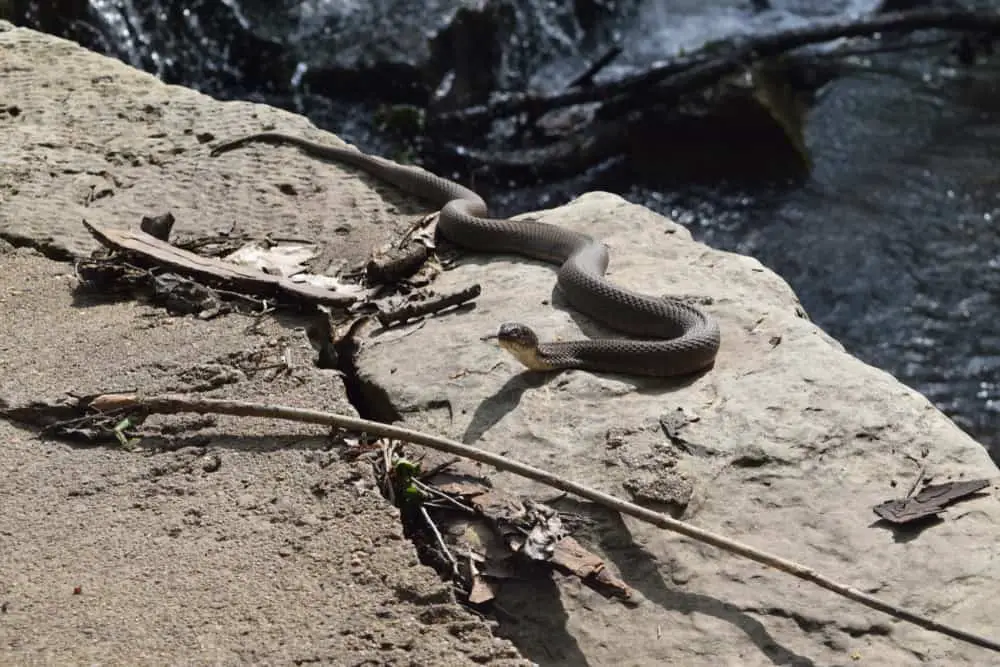
The Plain-bellied water snake is a heavy-bodied, dark-colored, medium-sized snake with a plain yellow belly and a greenish-gray, gray, or brownish-black body with little or no pattern. Their plain yellow bellies can sometimes be orange-colored.
They like to live in quiet water like swamps, lakes, ponds, and sloughs, where they will bask on logs in shallow water or on tree branches above the water along the shore.
It is non-venomous, but when threatened or cornered, this snake will strike and bite. It feeds on toad’s frogs, fish, tadpoles, crayfish, and salamanders.
Plain-bellied water snakes are active from March through to October. Mating occurs in April and May, where after the female gives birth to 10 to 30 live young.
Northern water snake – Nerodia sipedon
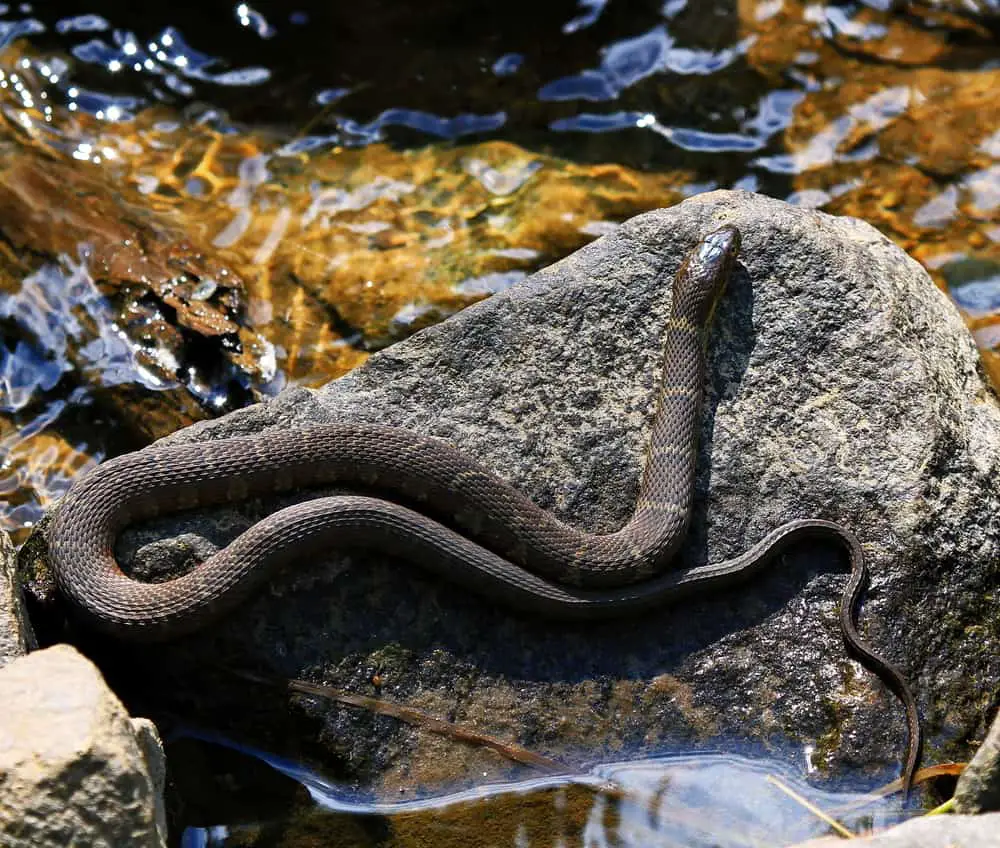
The non-venomous Northern water snake is brown, gray, buff, or tan with dark bands. They are often mistakenly identified as cottonmouths or copperhead snakes. Northern water snakes are harmless but will flatten their bodies and bite when agitated.
They measure 2 to 4.5 feet long when fully grown and are found throughout the eastern half of the United States.
They live in several habitats like seasonal pools, lakes, slow-moving rivers, and wetlands, where they will bask on rocks, logs, or overhanging branches.
They feed on various amphibians like toads, northern cricket frogs, southern leopard frogs, spring peepers, and bullfrog tadpoles, and fish like sunfish, brook trout, minnows, smallmouth bass, hogsuckers, and bullhead catfish.
Mating occurs after hibernation in March and April, where after females give birth in August from 12 to 35 live young.
Conclusion
Water snakes are harmless, medium-sized, nonvenomous, native snakes that live near water bodies like lakes, rivers, marshlands, and ponds. Several species of water snakes are found in the United States. Their markings and colors can vary from species to species.
They typically have triangular heads and are dark brown to black with lighter-colored bands, splotches, and stocky bodies, with keeled scales. We hope the types of water snakes we listed above will help you identify them when you encounter one near a water body on your next outdoor adventure.
Sources:
Florida Museum: Brown Water Snake
Texas Parks and Wildlife: Concho Water Snakes
Missouri Department of Conservation: Mississippi Green Watersnake
Florida Museum: Diamond Backed Watersnake



